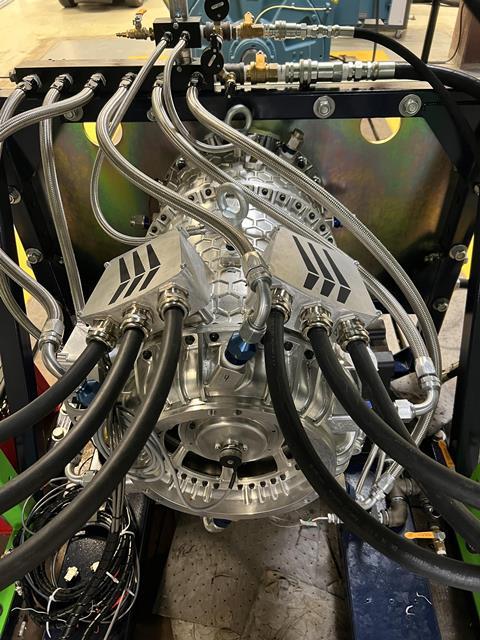Electric aviation propulsion company Wright Electric sees a path to develop aviation batteries with four times the energy density of traditional lithium batteries, a breakthrough that could enable development of larger electric passenger aircraft.
The New York start-up, which began as a developer of electric motors for future all-electric aircraft, has started a new battery-development arm called Wright Batteries, the firm said on 3 October.

Wright Electric’s work to date has included the development of a 2MW electric motor, a project that is continuing.
Battery makers have been squeezing more power out of their products for years, but electric aircraft developers are banking on continued improvement.
Some of today’s best lithium-ion batteries for aviation use have energy density of about 250 watt-hours per kilogram (Wh/kg). Though that much power density might work for small aircraft, many experts agree current battery technology remains insufficient for powering large passenger transports.
But new battery technologies and battery types – such as high-temperature “molten batteries” – have potential to generate up to 1,000Wh/kg, says Wright Electric founder and chief executive Jeff Engler.
“We have visibility into new battery chemistries that could get us to our target of 1,000Wh/kg” he says. “There are a lot of chemistries that might potentially get there that have been overlooked by the traditional battery industry.”
Engler notes that some cutting-edge battery developers have already hit the 500Wh/kg threshold. Indeed, China’s CATL and California-based Amprius this year said they had developed 500Wh/kg batteries, which they promoted as holding promise for electric aviation.
The aviation industry needs batteries with that much energy density to achieve widespread decarbonisation, according to Engler. Such batteries could be sufficient to power all-electric aircraft capable of carrying about 100 passengers on flights of about 600-700nm (1,130-1,290km).
“We are looking at different batteries that operate at high temperatures [and] in different form factors, that enable you to get to a higher fraction of active materials in the cell,” Engler says.
Common lithium-ion batteries are designed for use at room temperature and are produced by rolling up a long, flat strip of lithium surrounded by plastic and other supporting material – like a “jelly roll”, he notes. Lithium, which produces the electricity, accounts for only a relatively small percent of such batteries’ overall weight – 3% in the case of automotive batteries.
But batteries can deliver significantly more power as their temperature increases.
“Molten batteries can have a higher fraction of lithium, or whatever the active materials are,” says Engler, noting ”atoms are more mobile when they’re in a liquid state. Heating the battery up to a molten temperature creates engineering challenges, but it also allows us to have high power density and energy density.”
One possible means of increasing the temperature of an aircraft battery is to heat it using ground equipment before flights, he adds.
Such batteries would also have different internal structures. ”A typical battery has solid anodes and solid cathode stacked in a jelly roll shape. Ours has [a] molten anode and molten cathode in two bath tub shapes next to each other,” Engler says. “That enables you to increase the fraction of the material that is the active material, and therefore reduce the overall weight.”
High-temperatures batteries will likely first be used for ground applications, such as to help decarbonise the mining industry, but could eventually be incorporated into aircraft, says Engler. “They are going to be very good… [for] these hard-to-decarbonise industries.”
Wright Electric’s development of high-power electric motors for aircraft has given it expertise in cooling technologies that can apply to batteries, he adds.
Engler’s firm began studying battery technology in 2021 and has since hired four chemists to lead the research.
Wright Batteries is now pursuing three high-temperature battery technology paths and aims to begin testing prototypes in 2025. The firm hopes to offer such batteries for commercial applications by 2027.



























